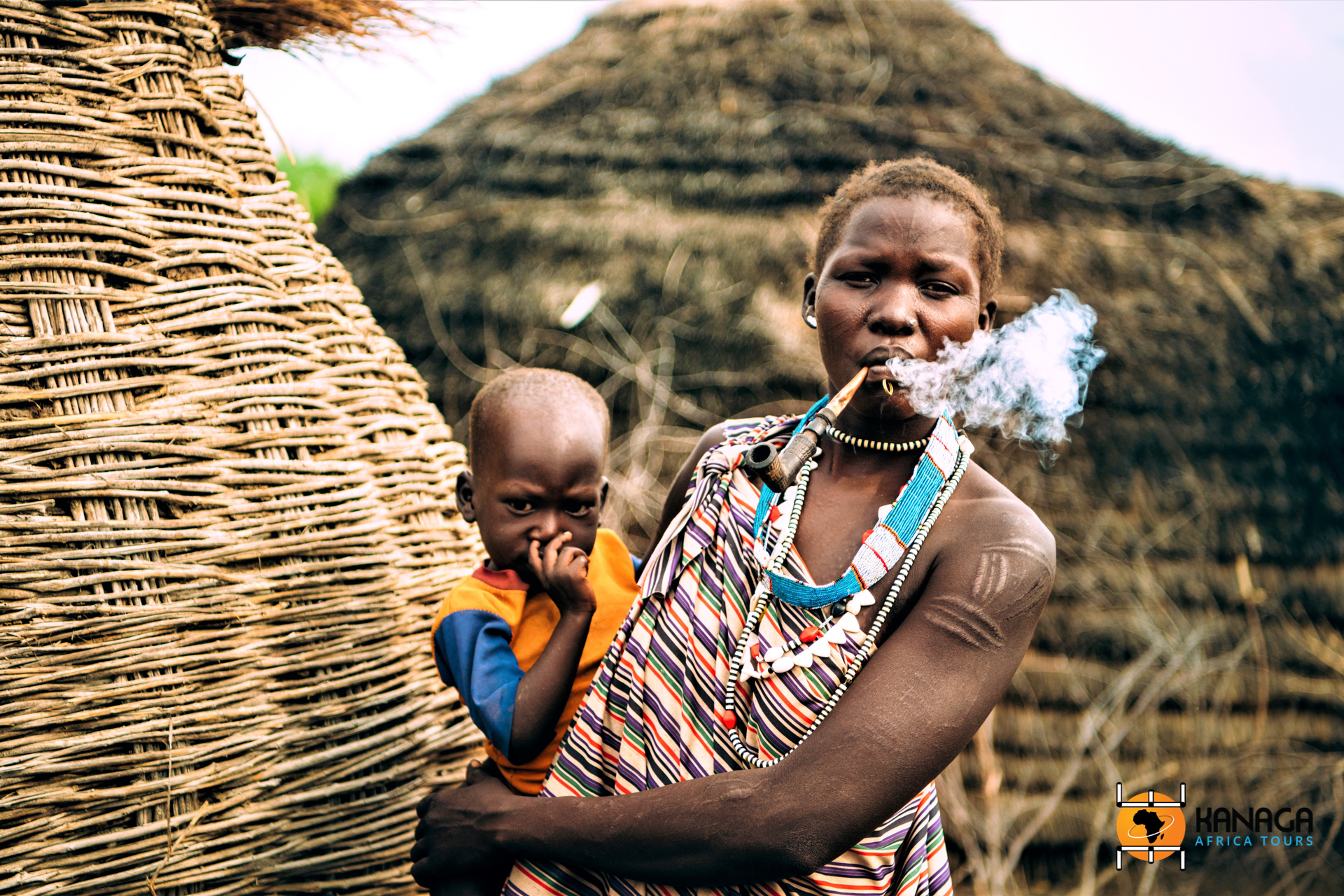South Sudan is a young state, born only in 2011, whose main ethnic group, the Dinka, has so far decided its contemporary political fortunes, but it is also an ancient ancestral land, bathed by the waters of the White Nile, cradle of a colourful mosaic of peoples whose identity is deeply rooted and whose rich traditions are more alive today than ever before.
About sixty groups make up the complex South Sudanese ethnic fabric, mostly of Nilotic origin and belonging to agro-pastoral societies, in a mix of nomadic and semi-nomadic, but also sedentary cultures. While some peoples share a number of common anthropological matrices, others differ in their distinct and singular identity characteristics.
The Dinka, Nuer and Shillok are numerically the predominant peoples of South Sudan, but in the regions of Central and Eastern Equatoria alone, there are dozens of other groups and sub-groups, considered perhaps among the most isolated and poor in the world, due to the paralysis in which the country has been plunged for decades, but very rich in traditions and free from the flattening of modern times, which is often the enemy of peoples’ identity cultures.
To the east of Juba lie the fertile rural plains near the towns of Torit and Kapoeta, sporadically enlivened by a few rocky heights, where a small universe of peoples, preserving intact their customs and traditions, their religions and ancestral rites, their subsistence economies, handed down from generation to generation since the dawn of time. Here, a multitude of remote villages made of mud, branches and straw, host archaic societies, mainly of breeders and farmers, but also, when necessary, of skilled hunters and fishermen.
The Jye herders, belonging to the large group of Karamojong and Turkana peoples, with their characteristic tribal dances and ceremonies, inhabit the lands around Kapoeta, together with the Toposa, herders who also share the same Nilotic origins, constituting their main clan. Famous for their walled villages, called boma, whose dwellings are decorated with animal skulls, the Toposa are organised in strongly hierarchical societies, in which the aesthetic cult of the body is a preponderant part, according to a complex symbolism, expressed in elaborate decorations and showy scarifications on the face and body, indicative of the status and role each individual occupies in Toposa society.
Equally characteristic and significant are the beaded ornaments and identity scarifications of the Larim herders, a tribe that long ago perched among the Boya hills to escape wars and cattle theft, building houses of clay and thatch, richly decorated with as many symbolic motifs. Their economy and social life revolves around the rural market called Camp 15, where they spend their days smoking tobacco in handmade pipes, trading goods and livestock, especially with the neighbouring Didinga clans.
In the surroundings of the town of Torit, a mountainous and rocky landscape offered shelter to the ancient Kingdom of the Lotuko, a people who settled in the area in the 15th century, becoming sedentary and living off agriculture, livestock and fishing. Their economy and spirituality revolved around the cyclical nature of the seasons, in which the figure of the chief witch-doctor, responsible for officiating at propitiatory rites for the abundance of rain and harvests, was of particular importance.
A common characteristic of these strongly identity-driven peoples, and of many other tribes inhabiting the South Sudanese lands, is undoubtedly their deep attachment to their ancestral traditions, which have been perpetuated intact for centuries, motivated by animist beliefs and ancient cults, despite the spread of the Christian religion in South Sudan. Focusing on propitiatory sacrificial ceremonies, initiations and rites of passage to adulthood, and ancestor worship, their rites are mainly governed by the cyclical nature of the rains and natural events, officiated by a spiritual leader. To visit the villages and rural communities of what was called Equatoria by the first settlers is to plunge into an authentic dimension that goes far beyond history, into a temporal sphere that still belongs to myth and nature. This is due to the forced, but also partly desired, isolation of these populations, in a country that has particularly suffered from international and internal contrasts, but that today is increasingly moving towards the coveted stability.







